In this blog, we will delve into the fascinating world of baby birthmarks and rashes. First, we’ll define what birthmarks and rashes are in the context of newborns. Understanding these common skin conditions is crucial for every parent, caregiver, and anyone involved in the care of infants. We recognize the significance of being well-informed about these skin issues to ensure the well-being of our little ones. The primary purpose of this blog is to provide valuable information and guidance on baby birthmarks and rashes, helping parents navigate through potential concerns and providing insights into effective skincare solutions for their precious bundles of joy.
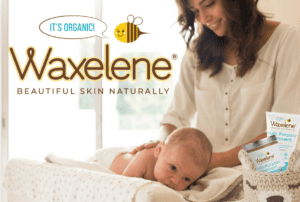
Common Types of Birthmarks
Birthmarks are common in newborns and can vary in size, shape, and color. Understanding the different types of birthmarks can help parents better identify and differentiate them. Here are some of the common types of birthmarks:
Pigmented Birthmarks
A pigmented birthmark is a type of birthmark that appears as a discolored patch or spot on the skin. It is caused by an overgrowth or accumulation of pigment cells in the skin. Pigmented birthmarks can range in color from light brown to dark brown or even black. Examples of pigmented birthmarks include:
- Mongolian spots: Mongolian spots are bluish-gray or bluish-black marks that often appear on the lower back or buttocks of newborns. They are more commonly found in babies with darker skin tones. Mongolian spots are harmless and tend to fade over time without any treatment.
- Café-au-lait spots: Café-au-lait spots are light brown patches that can occur anywhere on the baby’s body. They are usually oval or irregular in shape and may darken or increase in size over time. While café-au-lait spots are generally harmless, having multiple spots or larger-sized spots may indicate an underlying medical condition.
- Nevus of Ota: Nevus of Ota is a bluish-gray birthmark that appears on the face, typically around the eye area. It is caused by an accumulation of pigment-producing cells. Although nevus of Ota is usually harmless, it is important to have it evaluated by a healthcare professional to rule out any associated eye problems.

Vascular Birthmarks
A vascular birthmark is a birthmark that results from abnormal blood vessels or capillaries in the skin. These birthmarks appear as red, pink, or purple discolorations and can vary in size, shape, and appearance. Vascular birthmarks are usually present at birth or appear shortly thereafter. Examples of vascular birthmarks include:
- Strawberry hemangiomas: Strawberry hemangiomas are raised, red birthmarks that can appear anywhere on the body. They often develop within the first few weeks of life and grow rapidly in size. Most strawberry hemangiomas resolve on their own by the age of 5 to 10 years.
- Port-wine stains: Port-wine stains are flat, pink, red, or purple birthmarks caused by abnormal blood vessels. They typically persist throughout a person’s life and can darken or thicken over time. Port-wine stains commonly occur on the face but can appear on other body parts as well.
- Salmon patches: Salmon patches, also known as angel kisses or stork bites, are flat, pink or red patches that are often found on the forehead, eyelids, upper lip, or back of the neck. They are very common in newborns and tend to fade within the first few years of life.
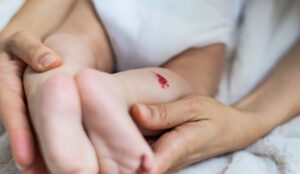
Understanding Baby Rashes
Diaper Rash
Diaper rash is a common skin condition that affects many babies. It is characterized by redness, irritation, and discomfort in the diaper area. Several factors can contribute to diaper rash, including prolonged exposure to wetness, friction, and sensitivity to certain diaper materials or products.
Causes and Prevention Tips: The primary causes of diaper rash include prolonged exposure to urine and feces, infrequent diaper changes, and the use of harsh or irritating products. To prevent diaper rash, ensure you change your baby’s diaper frequently, clean the area gently with mild soap and water, and use a barrier cream or ointment, such as zinc oxide, to protect the skin.
Treatment Options and Home Remedies: If your baby develops diaper rash, there are several treatment options available. These include keeping the area clean and dry, using a diaper rash cream or ointment, and allowing your baby to go diaper-free for short periods to let the skin breathe. Additionally, avoid using tight-fitting diapers or plastic pants, which can trap moisture.
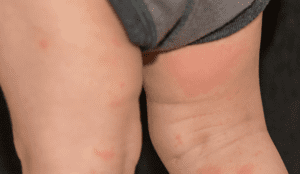
Eczema
Eczema, also known as atopic dermatitis, is a chronic skin condition characterized by dry, itchy, and inflamed patches of skin. It commonly appears in infancy and can be triggered by various factors, including genetics, allergens, irritants, and changes in temperature or humidity.
Definition and Symptoms: Eczema presents as red, itchy patches of skin that can become dry, scaly, and even develop into oozing or crusting sores. Babies with eczema may experience frequent scratching, disrupted sleep, and irritability.
Triggers and Prevention Strategies: Identifying and avoiding triggers is crucial in managing eczema. Common triggers include certain foods, allergens (such as pet dander or pollen), harsh soaps or detergents, and exposure to extreme temperatures. To prevent flare-ups, maintain a consistent skincare routine using mild, fragrance-free products, keep the skin moisturized, dress your baby in breathable fabrics, and minimize exposure to known triggers.
Treatment Options, Including Waxelene as a Natural Remedy: There are various treatment options available for managing eczema in babies. These include using emollient creams or ointments to moisturize the skin, applying prescribed topical medications, and using antihistamines or corticosteroids as advised by a healthcare professional. Waxelene’s natural formula can also be beneficial, as it provides a protective barrier and helps soothe dry, irritated skin without harsh chemicals or additives.
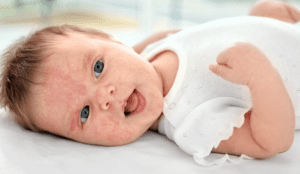
Cradle Cap
Cradle cap, medically known as seborrheic dermatitis, is a common scalp condition in infants. It appears as thick, yellowish or greasy scales or crusts on the scalp, often accompanied by redness and itchiness.
Causes and Characteristics: The exact cause of cradle cap is unknown, but it is believed to be related to overactive oil glands, yeast overgrowth, or hormonal changes. It is not contagious or harmful to your baby. Cradle cap typically resolves on its own within a few months to a year.
Treatment and Management Techniques: To manage cradle cap, gently wash your baby’s scalp with a mild shampoo and use a soft brush or comb to remove the scales. Avoid picking or scratching at the scales, as it can lead to irritation and potential infection. Applying a small amount of natural oils, such as olive oil or almond oil, can help soften the scales before gently removing them.
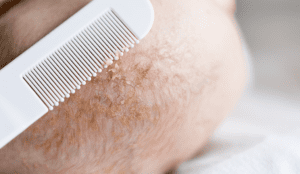
Heat Rash
Heat rash, also known as prickly heat or miliaria, occurs when sweat ducts become blocked, trapping sweat beneath the skin. It commonly appears as small red bumps or blisters and can be itchy or prickly.
Overview of Heat Rash in Babies: Heat rash is more likely to occur in hot and humid environments or when babies are overdressed. It most commonly affects areas of the body where sweat accumulates, such as the neck, armpits, diaper area, or skin folds.
Prevention Measures and Soothing Remedies: To prevent heat rash, dress your baby in loose-fitting, breathable clothing, keep them cool in hot weather, and avoid excessive bundling. If your baby develops heat rash, move them to a cooler environment, gently clean the affected area with mild soap and water, and allow the skin to air dry. Applying a soothing, hypoallergenic lotion or using a cool compress can also provide relief.
Understanding these common baby rashes and their causes empowers parents to provide appropriate care and seek medical advice when needed. Remember, every baby is unique, and if you have concerns about your baby’s skin health or any persistent rashes, it is essential to consult with a healthcare professional for a proper diagnosis and personalized treatment plan.
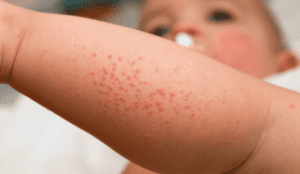
Waxelene’s Role in Baby Skincare
Waxelene’s Multi-Purpose Ointment plays a crucial role in baby skincare due to its natural and gentle formula. Crafted with carefully selected ingredients like organic soybean oil, beeswax, organic rosemary oil, and vitamin E, Waxelene provides a safe and effective solution for your baby’s sensitive skin. Its hypoallergenic properties make it suitable for even the most delicate skin types. Waxelene forms a protective barrier that helps soothe and calm common rashes such as diaper rash and eczema providing relief. Additionally, its moisturizing qualities help combat dryness, keeping your baby’s skin hydrated and supple. With Waxelene, you can have peace of mind knowing that you are using a natural and nurturing product to care for your little one’s skin.

Nurturing Your Baby’s Skin
In conclusion, understanding and caring for your baby’s skin is crucial. This blog provided key insights into baby birthmarks and rashes, emphasizing the importance of seeking professional advice and using gentle, effective products like Waxelene’s Multi-Purpose Ointment. By being proactive and informed, you can ensure your baby’s skin stays healthy and well-nurtured. Choose wisely and embrace the journey of parenthood with confidence in providing the best care for your little one’s precious skin.
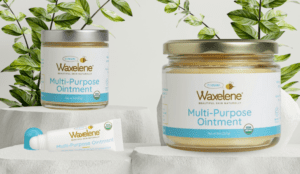


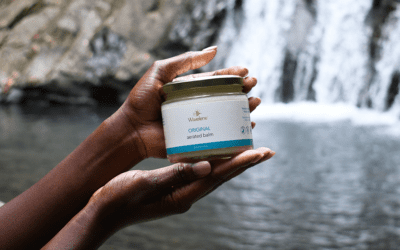


My brother suggested I might like this blog. He was totally right. This post actually made my day. You can not imagine simply how much time I had spent for this info! Thanks!
Normally I do not read article on blogs, however I would like to say that this write-up very forced me to try and do so! Your writing style has been amazed me. Thanks, quite great post.